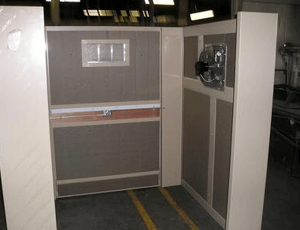When housed inside a pump cover, a pump and its equipment tend to produce heat. This can actually be helpful during the winter, but it can have the opposite effect when the additional heat builds inside your pump cover during the summer months. It can have a negative effect on your equipment, so you have to find ways to get rid of it.
 A pump cover is a great way to protect your pump from the elements. It will also keep vandals from your equipment and can even help with noise reduction.
A pump cover is a great way to protect your pump from the elements. It will also keep vandals from your equipment and can even help with noise reduction.
But when your pump starts generating heat in the summer, that heat needs an escape route. Here’s a look at why protecting pumps during the summer months is so important.
Heat Causes Damage
Heat trapped in a cover generated by pump equipment and the outside air temperature during summer months (or in warm climates) can do significant damage to equipment. Pumps and control panels can overheat rendering them useless, which can affect the process down the line for which they were put in place. Costs to replace the equipment and the addition of labor and downtime can make this a very expensive endeavor. So how do we suggest removing heat from a pump cover?
Louvers Cool Pump Enclosures
One suggestion is to add a louver(s) or vent to the outside wall on each end of the enclosure. The addition of louvers or vents placed near the top of the pump cover will allow warm air to escape and may also create a draft to pass through the enclosure and across the pumps to keep them from overheating.
Louvers and vents come in many different sizes that can accommodate most pump enclosures. They are also easily installed at the factory or on the project site. Louvers and vents can also serve a double purpose in allowing any fumes associated with the fluids that are being pumped to escape.
Larger Pumps Need Exhaust Fan
 In the case with larger pump(s) that can produce much more heat, we suggest accompanying a louver(s) with an exhaust fan accompanied with a thermostat on the opposite end of the enclosure.
In the case with larger pump(s) that can produce much more heat, we suggest accompanying a louver(s) with an exhaust fan accompanied with a thermostat on the opposite end of the enclosure.
The exhaust fan will pull outside air into the enclosure, across the pump equipment, and out the opposite end, allowing heat to escape and keeping the inside of the enclosure at a suitable temperature. The draft created by the fan inside the pump cover will force the louver blades open and allow air into the enclosure. When the fan turns off, the draft will stop and the louver blades will close.
Keep in mind that the exhaust fans utilize an electric motor to turn the fan blades, so you will want to consider a power source before installing.
HVAC For Emergency Pumps
Larger emergency fire pump applications take climate control even further. Since emergency pump equipment needs to be available in a moment’s notice, these much larger fire pump houses utilize wall-mounted HVAC units to closely control and monitor the temperature inside the building.
By following these simple steps to remove heat during the summer months you’ll be able to keep things flowing into the winter. It may also help extend the life span of the equipment, saving you money in the long run.
If you’d like to learn more on climate control for pump enclosures, download our pump cover checklist. You can use it to determine the dimensions of your pump enclosure.
In many cases, custom pump enclosures turn out to be less expensive than our standard models. A standard enclosure may contain too much space. If your enclosure is larger than it needs to be, you’re wasting money by paying for something you don’t need.



